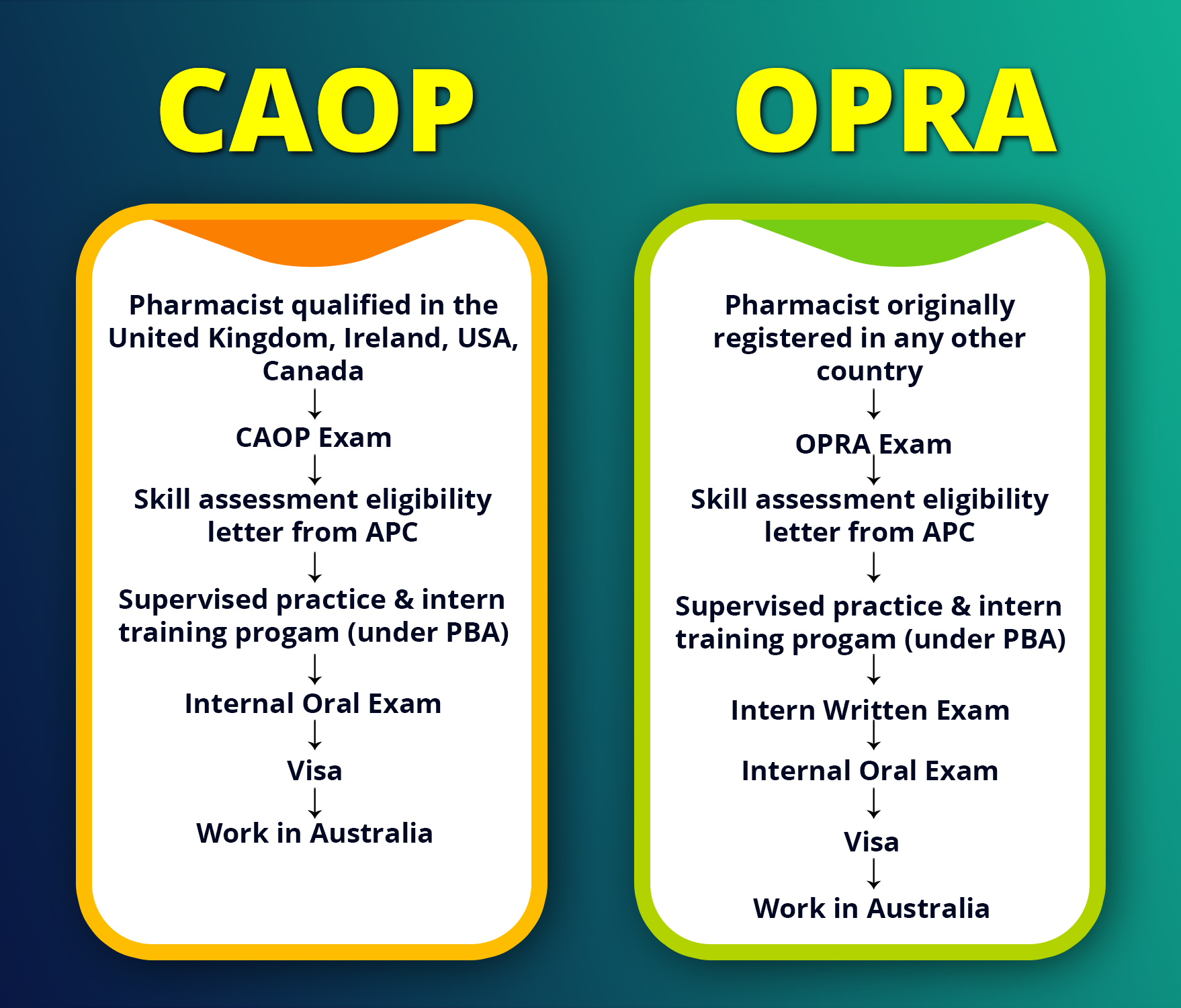Stream A: OPRA Exam
Stream A is designed for individuals who have completed a pharmacy qualification from an approved program and are registered pharmacists in the countries where they completed the pharmacy degree from. This path is ideal if you have a pharmacy degree, have achieved registration or are eligible for registration in your home country.
Eligibility Requirements:
- Completed Pharmacy Qualification: You must have finished a pharmacy degree from an institution recognised by the Australian Pharmacy Council (APC).
- Registration Status: You should either be registered, eligible for registration, or in the process of registration in the country where you obtained your pharmacy qualification.
What Does Stream A Involve?
Before diving into the specifics of Stream A, it’s important to understand the key steps involved in becoming a licensed pharmacist in Australia. Stream A is designed for international pharmacists who need to demonstrate their competency and adapt to the Australian healthcare system mainly by passing the OPRA exam. Here’s a breakdown of what Stream A involves:
Overseas Pharmacist Readiness Assessment (OPRA):
- Requirement: You need to take the OPRA exam, which evaluates your knowledge in pharmaceutical sciences.
- Focus: The exam covers various aspects of pharmaceutical sciences, including drug interactions, pharmacology, and medication management.
Supervised Practice:
- Requirement: You will need to complete a period of supervised practice in Australia. This involves working under the guidance of a registered pharmacist to meet Australian standards.
- Purpose: This supervised practice ensures you gain experience and understand the local pharmacy practices and regulations.
Board Registration Examination:
- Requirement: After completing your supervised practice, you must pass the Board Registration Examination.
- Content: This examination assesses your knowledge and readiness to practise as a pharmacist in Australia.
Why Choose OPRA?
If you’re an international pharmacist looking to practise in Australia, the Overseas Pharmacist Readiness Assessment (OPRA) is a crucial step in your journey. OPRA provides a thorough evaluation of your understanding of pharmaceutical sciences, including drug interactions, pharmacology, and medication management. The exam ensures that your knowledge is up-to-date and relevant to Australian healthcare standards.
Stream B: CAOP
Stream B is designed for pharmacists who are already registered in one of the following countries: the United Kingdom, the United States, Canada, or Ireland. This path is ideal if you have a pharmacy qualification from an accredited institution in these countries. This is also the best path if you are currently a practising pharmacist in the United Kingdom, the United States, Canada, or Ireland.
Eligibility Requirements:
- Completed Pharmacy Qualification: You must have a pharmacy degree from an accredited institution in the UK, US, Canada, or Ireland.
- Current Registration: You should be currently registered to practice as a pharmacist in the country where you obtained your qualification.
What Does Stream B Involve?
If you want to become a registered pharmacist in Australia, you need to understand the different steps required. For Stream B, it's important to know what you need to do and what you'll be tested on. Here’s a simple look at Stream B, especially focusing on the Competency Assessment of Overseas Pharmacists (CAOP), and why it's important for proving you're ready to work in Australia.
Competency Assessment of Overseas Pharmacists (CAOP):
- Requirement: Instead of a lengthy process, you will need to complete the CAOP.
- Content: The CAOP assesses your clinical skills, knowledge, and ability to apply pharmaceutical practices in an Australian context.
Why Choose CAOP? CAOP vs OPRA
Competency Assessment of Overseas Pharmacists (CAOP) offers an easy process for experienced pharmacists from specific countries, namely the United Kingdom, the United States, Canada, or Ireland. It’s an efficient route if you meet the eligibility criteria, as it focuses on assessing your practical competencies rather than requiring long supervised practice or more examinations.

Important Considerations
Choosing between OPRA and CAOP depends on your current qualifications, registration status, and career goals. OPRA is a comprehensive route for those who need additional training and assessment, while CAOP offers a quicker path for experienced pharmacists from certain countries. Here are a few points you should take care of before choosing either of the two options,
- Visa Requirements: Regardless of the stream you choose, ensure you meet the visa requirements for living and working in Australia. You’ll need the appropriate visa to legally practise as a pharmacist.
- Career Goals: Your choice of stream should align with your career objectives and the specific requirements of your intended pharmacy roles in Australia.
Conclusion
To ensure you make the best decision, carefully review the eligibility criteria and requirements for OPRA and CAOP. For more information and detailed guidance, visit the official OPRA exam website and explore the resources available to assist you in your journey to becoming a pharmacist in Australia. For those seeking personalised guidance and expert support through this process, Academically provides top-notch preparation courses and resources tailored to your needs. Our specialised programs are designed to help you clear the OPRA exam with confidence, offering everything from study materials to one-on-one consultations with industry experts.
Ready to take the next step in your pharmacy career in Australia? Contact Academically today for a free consultation and discover how they can help you achieve success in your OPRA exam.





